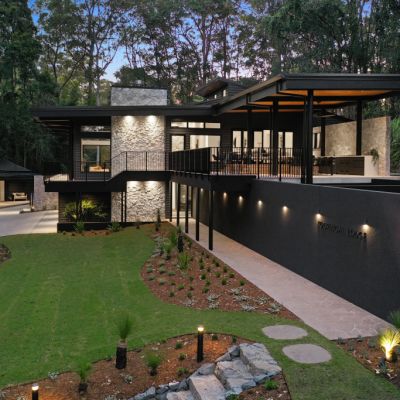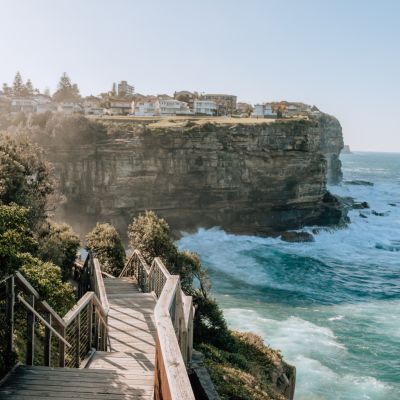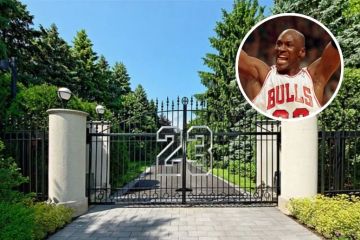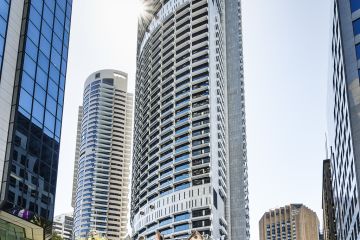Adelaide: Is this city the nation's best place to raise a family?

Living with his wife and small child in a rented two-bedroom apartment in a small walk-up block in Sydney, lawyer-turned-real-estate-agent Glenn McMillan felt, as COVID descended, that there must be a better way.
Shortly afterwards, he found it: a move back to his home city of Adelaide, where he’s now in a beautiful five-bedroom house on 900 square metres of land and paying less for his mortgage than he was in rent.
“I’ve lived in London, New York, Sao Paulo and then Sydney for eight years and really loved them all,” says McMillan, 39. “But at different stages in your life other things become important and Adelaide has so much to offer families.
“We’re now seeing lots of international professionals, just like us, coming here.”
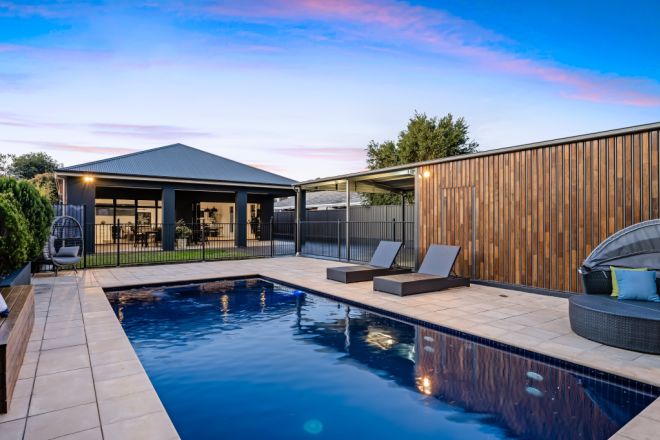
And that’s part of the answer to the riddle of why Adelaide’s property market performed so well during the pandemic and is still continuing to record some of the biggest median price jumps in Australia – the first net gain in migration in nearly 20 years.
Over the past 12 months, for instance, Adelaide clocked up an astounding 27.4 per cent increase in its median house price, the sharpest rise in the nation, according to Domain research.
Brisbane came in at 24.7 per cent, Hobart 21 per cent, Canberra 14.3 per cent, Perth 8.4 per cent, Sydney 8.3 per cent, Melbourne 5.2 per cent and Darwin 3.6 per cent.
Even when it comes to apartments – and Adelaide has far fewer of them than many other capital cities – the median price rose 15.6 per cent in the last 12 months, second only to Darwin’s 22.5 per cent rise. By contrast, Melbourne managed a lowly 1.4 per cent, while Sydney scraped home with a minuscule 0.4 per cent.
With the medians of houses and apartments combined, Adelaide still topped the country with an overall price leap of 25.9 per cent over the past 12 months.
“But we still have a comparatively low average house sale price, which has traditionally been the lowest in the country apart from Hobart, which makes Adelaide very attractive to everyone,” says TOOP+TOOP Real Estate’s Peter McMillan, Glenn’s father and the other half of their new father-and-son sales team.
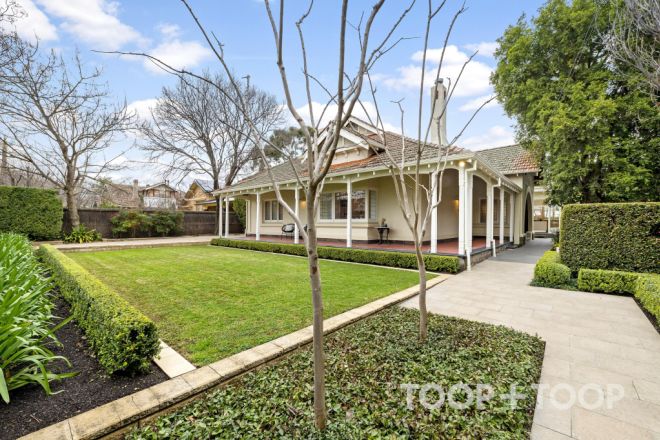
“Now, with the acceptability and efficiency of working from home, we’re getting in so many expats and people from Sydney and Melbourne who’ve found they can do their job from anywhere and not have to endure a commute in bumper-to-bumper traffic in their own cities. That’s keeping our market very strong.”
He’s currently selling a magnificent five-bedroom heritage home on 1126 square metres of land in blue-chip Toorak Gardens for up to $4.5 million.
The median house price in Adelaide is now $793,220, with the price surges now taking it above Perth, Darwin and Hobart. That’s still, however, well below Sydney’s $1.55 million, Canberra’s $1.15 million and Melbourne’s $1.07 million.
That means interstate migrants can often buy the pick of Adelaide’s crop – like the inner-city’s beautiful and often meticulously renovated old stone homes built in the late 1800s and early 1900s on substantial land blocks – and still have cash over from the sale of their current homes elsewhere.
The Australian Bureau of Statistics has found the recent net gains in the number of people were the first since December 2002.
“The relative affordability is a draw, but [so is] the lifestyle Adelaide offers,” says Charles Booth of Booth Real Estate, who has a stunning architect-designed, four-bedroom home in Fullarton on his books at over $3 million.
“The low stock levels are also keeping up prices and helping the market here remain resilient.
“Historically, Adelaide has price gains and then tends to plateau, holding those gains, until the next cycle when prices go up again. There aren’t those big falls you see in other cities.
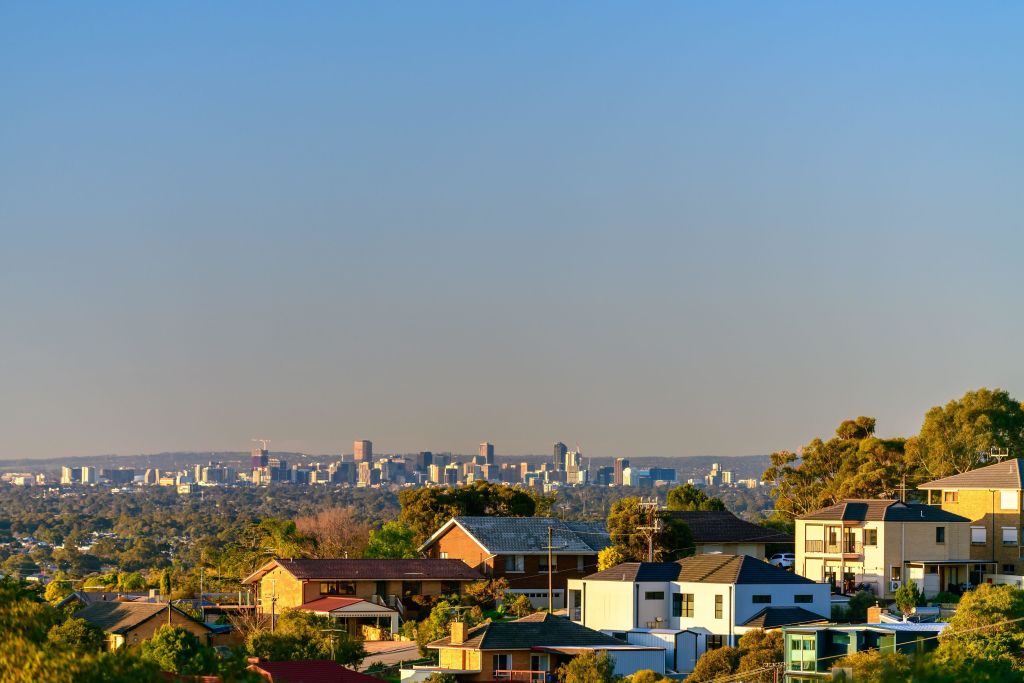
“The market here has probably got a little bit more cautious, without the urgency of six months ago, so properties might be a little bit longer on the market, but everything is still holding.”
Four Adelaide suburbs – Toorak Gardens, Unley Park, Medindie and Leabrook – have just tilted over the $2 million median in the last 12 months, something that once seemed unlikely.
“Adelaide has had amazing strength,” says Ray White chief economist Nerida Conisbee. “Part of it has been population movements, as you can have a much nicer home in a premier suburb with a short commute.
“But also South Australia’s economic growth has slowed the least in Australia, and last year Adelaide was named the third most liveable city in the world, and the highest in Australia [by the Economist Intelligence Unit’s Global Liveability Index 2021 ], although it went down in 2022.
“So it’s affordable, attractive, has a decent economy and lots of nice places to visit like Victor Harbour, Adelaide Hills and wineries nearby.”
Latest research from the Real Estate Institute of South Australia (REISA) found that the highest value areas which had the strongest growth over the past three years in the inner-ring north-east through to southern areas are now seeing the most cooling of prices.
These are led by areas like Joslin, Evandale and College Park, which saw prices rise by 40-60 per cent over the past 36 months.

Now the highest price growth is for lower-priced areas, like Seacombe Heights (up 5.9 per cent in the last quarter to a median of $766,000), Darlington (up by the same percentage to $732,500) and Auldana (up 5.5 per cent to $1,166,000).
“We’re still experiencing some growth in Adelaide but not by the same double-digit figures,” says REISA interim chief executive and executive director Cain Cooke.
“Adelaide has traditionally been very resilient and doesn’t see the peaks and troughs of other cities. We’re definitely holding strong in the face of interest rates and other factors.
“We’re quietly confident that we’ll continue to have incremental price growth because of the continued unprecedented demand and not enough supply.”
New listings are currently down by around 13 per cent, says Effie Vlachoulis of Harris Real Estate, who’s selling a sandstone-fronted 2013 house with a pool and pavilion in Clarence Park.
“So the spring boom hasn’t really happened yet, but we’re hoping it will come in summer instead. When the weather improves, people will be stirred into action once more.”
We recommend
We thought you might like
States
Capital Cities
Capital Cities - Rentals
Popular Areas
Allhomes
More
- © 2025, CoStar Group Inc.
